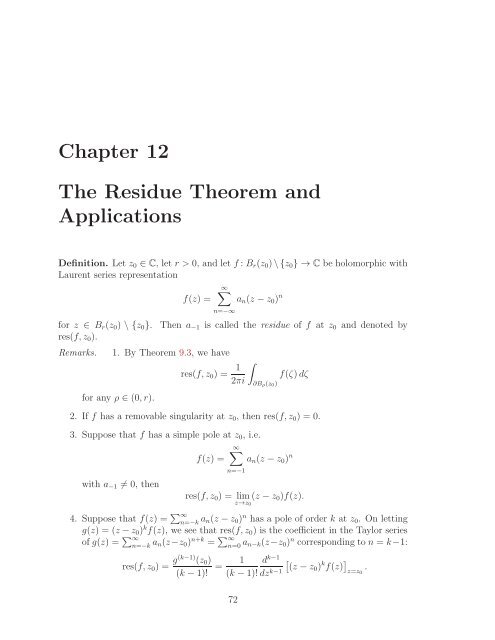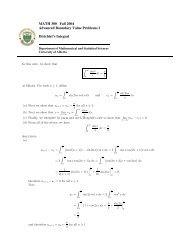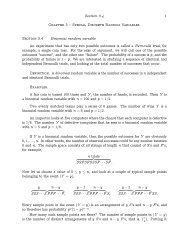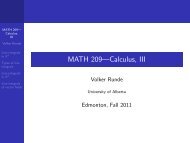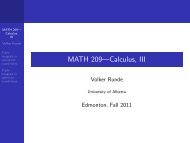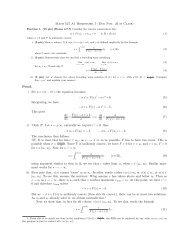Math 411: Honours Complex Variables - University of Alberta
Math 411: Honours Complex Variables - University of Alberta
Math 411: Honours Complex Variables - University of Alberta
Create successful ePaper yourself
Turn your PDF publications into a flip-book with our unique Google optimized e-Paper software.
Chapter 12<br />
The Residue Theorem and<br />
Applications<br />
Definition. Let z0 ∈ C, let r > 0, and let f: Br(z0)\{z0} → C be holomorphic with<br />
Laurent series representation<br />
∞�<br />
f(z) = an(z −z0) n<br />
n=−∞<br />
for z ∈ Br(z0) \ {z0}. Then a−1 is called the residue <strong>of</strong> f at z0 and denoted by<br />
res(f,z0).<br />
Remarks. 1. By Theorem 9.3, we have<br />
for any ρ ∈ (0,r).<br />
res(f,z0) = 1<br />
2πi<br />
�<br />
∂Bρ(z0)<br />
f(ζ)dζ<br />
2. If f has a removable singularity at z0, then res(f,z0) = 0.<br />
3. Suppose that f has a simple pole at z0, i.e.<br />
∞�<br />
f(z) = an(z −z0) n<br />
with a−1 �= 0, then<br />
n=−1<br />
res(f,z0) = lim(z<br />
−z0)f(z).<br />
z→z0<br />
4. Suppose that f(z) = �∞ n=−kan(z −z0) n has a pole <strong>of</strong> order k at z0. On letting<br />
g(z) = (z−z0) kf(z), we see that res(f,z0) is the coefficient in the Taylor series<br />
<strong>of</strong>g(z) = �∞ n=−kan(z−z0) n+k = �∞ n=0an−k(z−z0) n corresponding to n = k−1:<br />
res(f,z0) = g(k−1) (z0)<br />
(k −1)! =<br />
1 d<br />
(k −1)!<br />
k−1<br />
dzk−1 �<br />
(z −z0) k f(z) �<br />
z=z0 .<br />
72


